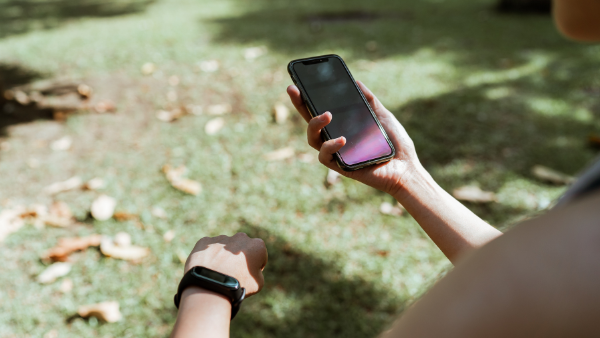
As global changes force more industries to digitally transform, greater expectations for customer and product experience also arise, making it more difficult for more entrenched, vital industries such as those in the healthcare space to keep up.
Today, cutting-edge technologies are used to diagnose and treat all forms of illnesses and health complications. But for some healthcare facilities around the world, patients are still struggling with ease of access to healthcare.
Technology has always been a prime enabler in the healthcare industry, and this has been made even more evident by the global pandemic. The need for social distancing accelerated the use of health tech, with video conferencing becoming almost synonymous with everyday life, and telehealth booming for the first time in years. Telehealth is the use of two-way telecommunications technologies to provide clinical healthcare through a variety of remote methods.
A 2020 report by the CDC in the US found that there was a direct correlation between the outbreak of the pandemic and a 154% increase in telehealth visits during the last week of March 2020, compared with the same period back in 2019.
This is just one instance of consumers adopting digital means to address the increased demand for healthcare services. More people are abandoning traditional approaches in exchange for digital convenience, but there are many more reasons why healthcare brands need to digitally evolve their customer and product experiences. Here are five insights from our Everise-Dossier U.S. Consumer report.
57% of Americans would like to do more for their health – digital is an easy channel for them to gain healthcare access.
The COVID-19 pandemic accelerated the use of digital platforms for communicating and guiding healthcare. New healthcare technologies such as virtual visits, remote monitoring, and patient-engagement tools were utilized to some extent at the height of the pandemic, reducing foot traffic for hospitals and preventing further transmission of the virus.
Statista found that 57% of Americans would like to do more for their health, and the advent of digital technologies can help them achieve that. Additionally, research from Frost & Sullivan predicts that nearly 35% of patient interactions will be digital in 2021, and as more customers grow accustomed to digital healthcare, it will soon become a demand for healthcare providers.
The national spending for the U.S. healthcare market is projected to reach $5.7 trillion by 2026. Healthcare brands would do well to improve their product and customer experiences, such as investing in digital front door strategies to stay relevant in a digitally connected space. Being well-versed in digital technologies can help healthcare brands effectively treat patients, provide effective and modern healthcare, and bring in business.
43% of consumers could imagine consulting a doctor via app or online chat.
Online consultations became a necessary innovation in response to social distancing measures. Juniper Research’s May 2021 Telemedicine report predicts that worldwide teleconsultations will reach 765 million by 2025, which is a drastic increase from 348 million in 2020, reflecting an annual growth rate of 17.1% across the forecast period.
Online appointments give patients and healthcare providers the convenience of undergoing medical consultations without needing to be physically present in the same room. The adoption of new technologies is benefitting everyone in the healthcare space, with new technological advancements already enabling modern solutions.
Recent developments in AI and chatbot technology are paving the way for contactless conversational experiences. According to a Salesforce survey, 86% of customers would rather get answers from a chatbot than fill a website form, but modern chatbots can so much do more. Some companies are already using chatbots to offer symptom diagnoses, nutrition tracking, fact-checking, mental health consultations, and more. In 2020, WhatsApp even partnered with the World Health Organization (WHO) to make a chatbot service that answers users’ questions on COVID-19.
There's no denying that utilizing AI and Chatbots can improve healthcare experiences for everyone. For healthcare brands, It's only a matter of finding the right digital solution that suits their needs.
17% of Americans are purchasing medication online – a rapidly growing number.
There has been a steady increase in people who prefer to buy their medication online. The recent growth of consumer spending on medical products, coupled with the rising internet penetration, is expected to increase demand for the healthcare e-commerce market. According to a report by The Business Research Company, the healthcare e-commerce market is expected to reach $643.07 billion in 2025 at a CAGR of 17%. For healthcare brands, this may cause challenges along the way, especially if unprecedented global events such as the pandemic continue to disrupt the healthcare industry.
There are also many advantages for consumers when they order their medication online, such as having the option to choose from different products and even talk with pharmacists while staying at home. In some cases, Internet medicine shopping also saves consumers money.

Potential patients who research online either for appointments or medication prefer to call because healthcare is personal and private. Sequence Inc. found that 88% of healthcare appointments are scheduled by phone, and this can lead to increased call and chat volumes for healthcare providers. As vaccination rollouts occur globally this year, healthcare organizations are projected to experience a 250-500% call volume increase to their call centers.
Healthcare brands can keep up with fluctuating consumer demands and enhance their store support by utilizing digital solutions that help improve efficiency and manage upticks in call and chat volumes.
34% of purchased health-tech apps were used to manage physical and mental health
New advancements in mobile technology are enabling people to manage their mental and physical health through apps. Nowadays, doctors, researchers, and patients have multiple ways to access help, monitor their progress, and increase their understanding of an individual’s overall wellness through devices such as smartphones and tablets.

There are numerous stand-alone programs that promise to improve mental health by connecting the user connect to a peer counselor or to a health care professional. There are also more sophisticated health apps that can use a device’s built-in sensors to collect information on a user’s typical behavioral patterns and signal for help before a crisis occurs.
While mobile technologies may lead the new era of healthcare technology, it still raises concerns, especially on the side of its users. Solving potential problems will always be an important part of ensuring that apps and products by healthcare brands can provide the benefits they promise without causing harm.
Some major concerns can comprise of the following:
These are just some of the many factors to consider when developing a healthcare product or service for success. Healthcare brands that are looking to break through the market with their products or services need to ensure that they provide a safe and seamless experience for their users.
13% of Americans are booking fitness & health services online.
While the pandemic enforced nationwide lockdowns and social distancing norms, most traditional fitness studios such as gyms closed. This led to people transitioning to new forms of virtual fitness and increasing the downloads of usage and fitness apps. An article published in the World Economic Forum in September 2020, the global downloads of fitness and health apps increased by 46%. This increase was due to the growing trend of online fitness that is driving the market globally, coupled with the rising awareness for health and wellness.
In 2020, the global fitness app market size was valued at USD 4.4 billion. This number is expected to expand at a compound annual growth rate (CAGR) of 21.6% from 2021 to 2028. Fitness and nutrition apps utilize artificial intelligence, machine learning, and other technologies that provide personalized fitness programs to users. They also various forms of convenient fitness tracking, such as personalized diet charts, diet monitoring, step tracking, and some may also provide personalized health coaches. These features are increasing the growth potential of the market, and there are more to come.
The healthcare industry will certainly face shifting customer expectations in the coming years, and the pandemic was just one example of how global events can drastically speed up digital transformation for businesses worldwide. As with every industry, it is important to adopt new technologies that can help you evolve experiences and meet the changing demands of the market.
Related Insights: